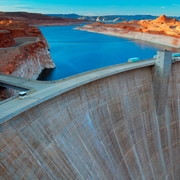Executive Summary
Water is essential; at a very basic level, we require water of the right quality, at the right time, and in the right amount as a fundamental building block for life. Our nation’s management of water resources is crucial for ensuring public health and prosperity.
There is an ongoing national dialogue on water, which has produced a vast number of reports, studies, and analyses containing hundreds, if not thousands, of recommendations for water science and policy. There is great opportunity in understanding the assessments and recommendations that have come before, in order to inform the future – we can build on existing knowledge, and identify common priorities and unmet needs.
A review of thirty reports on hydrologic science and management reveals twelve common recommendations:
-
Improve data collection
-
Improve data management
-
Increase scientific understanding for water resources decision making in a changing
climate
-
Advance modeling capacity
-
Expand and tailor products for water resources managers
-
Support integrated approaches to water management
-
Address water rights
-
Expand and protect water supplies
-
Invest in water infrastructure
-
Establish federal coordination and planning processes
-
Invest in training and workforce development
-
Expand education and outreach
The literature highlights how crucial it is to identify and manage competing objectives; there are many different goals in water resources management, and failing to explicitly address the multiple, and possibly competing, goals can lead to suboptimal outcomes. In addition, virtually every report emphasizes the importance of making the most of existing resources, of doing a better job with the resources that we already have.
We also identify six topics that are not well covered in the national dialogue on water:
-
Increasing public knowledge and understanding
-
Planning for “big data”
-
Increasing public-private engagement
-
Preparing for hydrologic extremes
-
Understanding and managing surface and groundwater interactions
-
Understanding international dimensions
However, it is important to note that some of these gaps are more from lack of integration than because nobody is thinking about them. For example, the conjunctive management of surface water and groundwater has received a lot of attention in specific communities, but it has not been integrated with the general national dialogue on water. Similarly, the meteorological and emergency management communities have an overriding concern about adequately forecasting and preparing for hydrologic extremes, but this is not represented to the same degree in the national dialogue. This synthesis focuses on studies that address the nation’s water management broadly, and identifies a few key issues that the national conversation has overlooked.
Finally, some recommendations appear within the reviewed literature with much greater frequency than others. This synthesis identifies the seven recommendations that were mentioned most often and by the highest number of reports. This serves as a rough measure of how recommendations have been prioritized within the existing literature.
